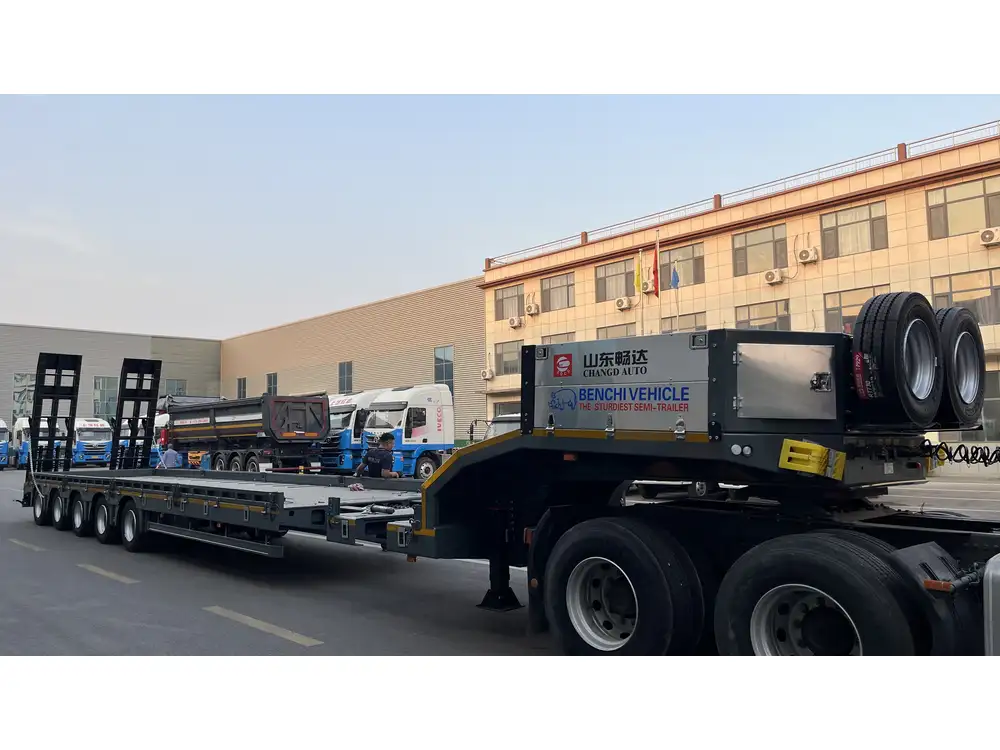When it comes to managing semi-trailers, understanding the process of getting a semi-trailer off its wheel base is crucial for safety and efficiency. This guide delves into the intricacies of maneuvering this complex task, ensuring that users grasp every critical aspect involved.
Understanding Semi-Trailers and Their Wheel Bases
What is a Semi-Trailer?
A semi-trailer is a type of trailer that cannot stand alone. It is designed to be connected to a truck or a tractor unit, relying on the vehicle for support. Semi-trailers are widely used in freight transport due to their ability to carry heavy loads over long distances.

What Constitutes a Wheel Base?
The wheel base of a semi-trailer refers to the distance between the front and rear axles. This dimension is crucial as it affects trailer handling, load distribution, and overall stability during transport. An improper wheel base setup can lead to difficulties in maneuverability and increased wear on both the trailer and the tractor unit.
Why Remove a Semi-Trailer from Its Wheel Base?
Various situations require a semi-trailer to be removed from its wheel base:
- Maintenance or Repair Needs: Regular inspections and repairs may necessitate the removal of the trailer.
- Storage: Efficient use of space in a yard or warehouse may require separating the semi-trailer from its wheel base.
- Transport Adjustments: Modifications in transport requirements may result in the need to reconfigure the semi-trailer setup.
Step-by-Step Process to Get a Semi-Trailer Off Its Wheel Base
To successfully execute this task, follow this detailed guide:

1. Preparation and Safety Checks
Safety Gear Required
- Hard Hat
- Safety Gloves
- Steel-toed Boots
- Hi-visibility Vest
Before commencing the process, it is essential to equip oneself with appropriate safety gear to mitigate potential hazards.
Inspecting the Equipment
Check the Hitch and Landing Gear:
- Ensure proper functioning of the landing gear and hitch mechanisms.
- Look for any signs of damage or wear.
Examine the Trailer Structure:
- Inspect for structural integrity.
- Confirm that the tires are inflated and in good condition.

2. Positioning the Truck and Trailer
Aligning the Tractor with the Semi-Trailer
Park on Level Ground:
- Ensure the truck and trailer are on a flat and stable surface to avoid accidents.
Back the Truck Into Position:
- Align the truck’s fifth wheel with the kingpin of the semi-trailer.
Engaging the Fifth Wheel Coupling
- Lock the Kingpin:
- Once aligned, lower the landing gear and engage the fifth wheel coupling properly to ensure a secure connection.

3. Lowering the Semi-Trailer from Its Wheel Base
Using the Landing Gear
Elevate the Trailer:
- Use the landing gear to raise the trailer slightly off of its wheel base.
- This will alleviate some of the weight from the wheel assembly.
Disengage the Fifth Wheel:
- With the trailer lifted, pull the release handle to disengage the coupling mechanism.
Carefully Rolling the Trailer Back
- Gently push the semi-trailer back, ensuring it is well-clear of the tractor. A helper may be needed to guide the process.

4. Final Steps: Place the Semi-Trailer on Stable Ground
Selecting the Right Spot
When placing the trailer down, choose a stable and level area to ensure transportation safety.
5. Securing the Trailer
Deploy the Landing Gear All the Way: Ensure that the landing gear is fully extended to prevent any tipping.
Check Stabilization: After placing the trailer, test its stability by gently rocking it. If it does not shift, you have successfully removed the trailer from its wheel base.

Potential Challenges and Solutions
Understanding the common challenges encountered during this process can streamline operations and enhance safety.
1. Difficulty Disengaging the Fifth Wheel
- Solution: If the fifth wheel does not disengage smoothly, check for debris or damage blocking the mechanism. Applying lubricant to moving parts can assist in freeing up stuck components.
2. Uneven Ground
- Solution: If the ground is uneven, use wood blocks under the landing gear to distribute weight evenly. This will provide additional stability when lowering the trailer.

3. Lack of Proper Equipment
- Solution: Always ensure that the necessary tools and equipment, including safety gear, are at hand before starting any operation. A checklist can facilitate thorough preparation.
Conclusion
With an understanding of the intricacies involved in removing a semi-trailer from its wheel base, along with an appreciation for safety and efficiency, this task can be executed with confidence. Adhering to the outlined steps ensures that the process is both effective and safe, minimizing risks associated with handling heavy equipment.
By investing time into learning the ins and outs of semi-trailer operations, manufacturers, fleet managers, and operators can optimize their logistics processes, reduce downtime, and enhance overall productivity.
For further insights on handling semi-trailers, continuous education on maintenance practices, safety protocols, and industry standards is encouraged to keep ahead in this demanding field.



